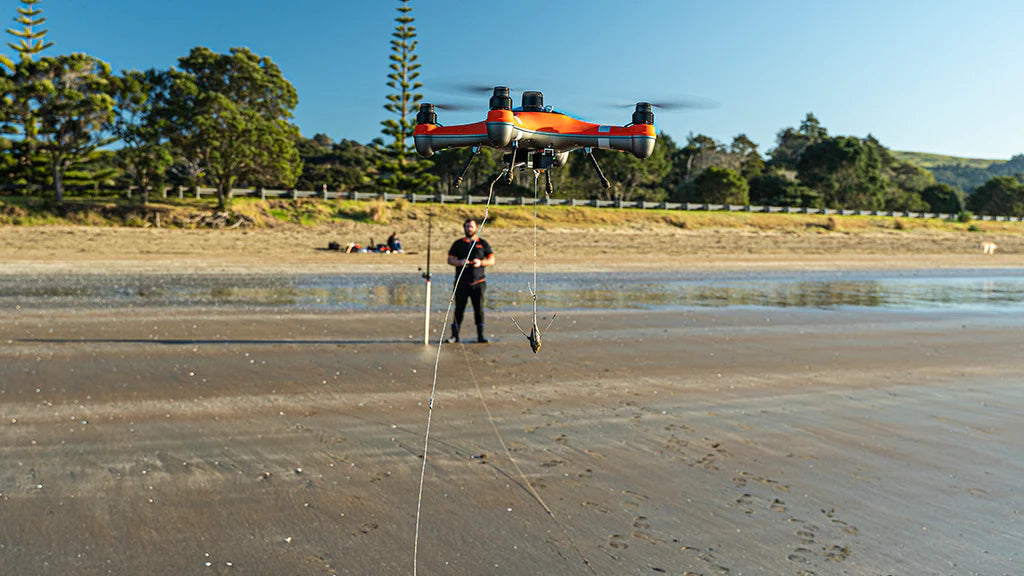
Responsible Anglers: Guide to the Legal Ins and Outs of Fishing with Drones
Fishing with drones is permitted in most states in America, but some, like Hawaii, have banned it due to concerns about wildlife endangerment. Ethical debates surround its use, with some arguing it provides an unfair advantage and raises privacy issues. In Florida, drone fishing is allowed if the line is released upon a bite, but FAA registration is required. Some fishing tournaments prohibit drone use to maintain fairness. Concerns also arise in scenarios like kite fishing, where drones could interfere with lines. While currently legal in most states, regulations may tighten due to conservation concerns. Nevertheless, many anglers are embracing drone technology for its fishing capabilities.
Can I bring my Fishing Drone on the plane?
Yes. However the Transportation Security Administration (TSA) permits drones through security checkpoints in the U.S., and there are important guidelines to follow regarding battery storage and airline regulations.
You're permitted to bring fishing drones through TSA checkpoints when traveling within the U.S. Yet, it's wise to confirm whether you must take the drone out of its bag during security screening since rules for large electronic items can differ. Additionally, please ensure to investigate which states permit fishing using drones before bringing them along.
Most drones can be carried in your hand luggage, reducing the risk of loss or theft. However, larger drones such as fishing drones may require checking. Individual airlines may have specific rules, but personal preference often dictates whether to carry the drone on or check it, emphasizing battery placement in the main cabin.
Lithium-ion drone batteries must be packed in carry-on baggage, not checked luggage, according to FAA regulations. There are also limits on battery watt hours (Wh), with specific approval needed for batteries exceeding certain thresholds.
Drone Packing Tips
- Remove the battery from the drone to prevent accidental activation.
- Securely pack the drone, especially the gimbal.
- Discharge the battery to 50% or less before travel.
- Use fireproof bags for battery storage, especially for multiple batteries.
- Carry laminated TSA battery regulations for reference.
Am I allowed to fly my Fishing Drone anywhere?
It varies by state and location. Some beach areas near airports ban drone flights, while certain beach resorts allow fishing drones in designated areas. Other areas are protected, prohibiting all fishing activities, including drone use.
In 2016, a viral YouTube video showcased anglers in Australia using a drone to catch tuna, sparking debate over the ethics and legality of drone fishing. The practice involves rigging a drone with bait and dropping it into schools of fish, extending anglers' reach beyond traditional casting limits. While some view it as innovative and accessible, others raise concerns about fairness and environmental impact.
A San Antonio angler caught a 9.5-foot tiger shark at Port Aransas beach using a drone-dropped bait(Eg. Fisherman MAX).
Situations like this make local governments enforce ordinances to regulate the usage of fishing drones such as the state of Texas.
Conclusion:
The permissibility of flying drones near beaches varies significantly depending on the location and local regulations. In certain coastal areas close to airports, local authorities may strictly prohibit drone usage for safety reasons. Conversely, some beach resorts may designate specific areas where fishing drones are permitted, catering to enthusiasts while ensuring the safety and enjoyment of all beachgoers. Additionally, certain beach locales may be designated as protected areas where fishing activities, including drone usage, are strictly prohibited to preserve the natural habitat and marine life. Understanding and adhering to these regulations ensures responsible drone usage and helps maintain the harmony between recreational activities and environmental conservation along our beautiful coastlines.

Leave a comment